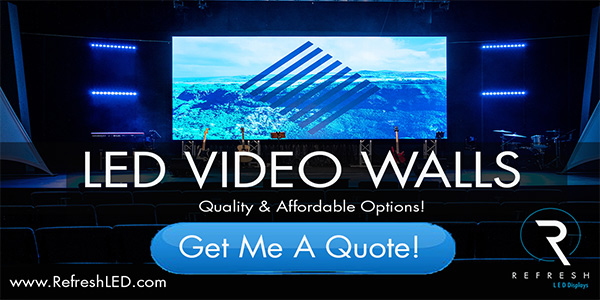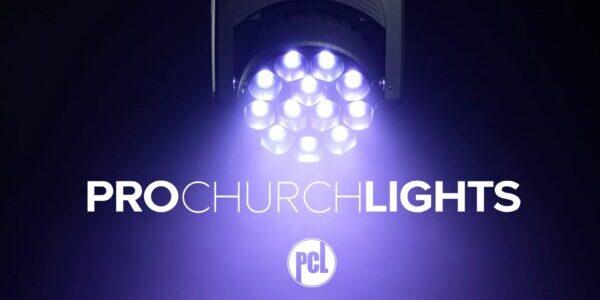This post sponsored by StageLightCompany.com—professional lighting for churches.
This article from Duke DeJong talks about using LED lighting effectively in an environment that incorporates haze.
LED lighting fixtures are becoming a key component in todays lighting rigs, and for good reason as they have many benefits to their use. Another lighting element I see more frequently used is haze, and again, for good reason as there is a lot you can do with your lighting in a well-hazed environment. But I’ve seen a lot of interesting choices made in rooms where LED fixtures and haze are used together. So today I want to look at three keys to getting the looks you want with LED fixtures and haze.
Creating Beams
As is true with conventional fixtures, it’s important to know what effect you are going for when choosing your LED fixtures. If you’re trying to create a nearly laser beam effect, made popular by the Clay Paky Sharpie fixture, you need to look at a fixture with a beam spread as small as you can get. Generally 5 degrees or less, these fixtures shoot tight, bright laser-like beams through the air for a very powerful effect. If you’re looking for something a little wider, but still very beam like, there are a wide range of 10-25 degree fixtures that create amazing looking beams in a well hazed environment.
Painting The Sky
While we’ve seen a lot of churches jump into stage design over the last 10-15 years, over the last 2-3 years we’re seeing a new movement of using a wide wash of light in conjunction with a well-hazed environment to paint the sky. Just like we would use wide wash fixtures to evenly light up a large surface, such as a wall or fabric, an even haze in the air can serve as a surface in which wash lights can cover as a surface of sorts. There are two parts to making this work. (1) First you need a good, even haze in the room. A good hazer and an oscillating fan are your friends here. And once you have an evenly hazed room, (2) using wide washing LED fixtures can paint your environment and create an amazing atmosphere.
The Skittle Effect
When LED’s first came out a decade plus ago, they were generally made up of red, green, and blue colored diodes—all put into the surface of a light fixture as individual lights. While this approach produces good color at 5 plus feet, the first 5 feet sometimes looked like a rainbow of colors. As the red, green, and blue lights mixed together over those first 5 feet, you could see what I call the Skittle effect as you have many colors represented before they blend. If you’re planning to use LED fixtures in a hazed environment, consider this effect as you’ll see all of the colors separately for a few feet before they have the opportunity to blend. Instead, you might want to consider a fixture that blends its colors before the lens, typically labeled as a tri or quad (or more) color fixture.
So those are the main concerns I see when it comes to using LED fixtures and haze on your stage. What’s your experience in this area? I’d love to see your comments.
Duke is passionate about equipping the next generation of ministry leaders, especially those serving churches with technology. He serves as Church Relations Director for CCI Solutions, a design build technology solutions provider. Follow Duke on Twitter: @dukedejong











Hello
I agree with this artical in most ways, although i want to add something. The Skittle Effect as its being called is now days minimized due to TRI LEDs usage, meaning RGB in One LED. The mixture ist still a little visible but only in like a 10cm distance to the LED.
So when using LED Bars oder Pars, which have this TRI LED, your skittle effect, doesn’t happen anymore.
Another thing, what maybe important to mention, in Creating Beams, is, that you don t need the most popular LED Fixtures. You can also get a Moving Head / Fixture with an Iris that can close, this will also give a a smaller sharper Beam, but you will have to make some cutbacks, on the light intensity. Meaning the Fixture will become darker, the more you close the Iris. As a side note, there are such things called Pinspots, and even Pinspots with Engines. (Negative on that, is no Color change ;), but can make a really cool effect. )
Well, sorry if my English ain t the best. Hope all i wrote helps in someway if not or you have a different opinon just let me know ;)
Be blessed
Greetings ben